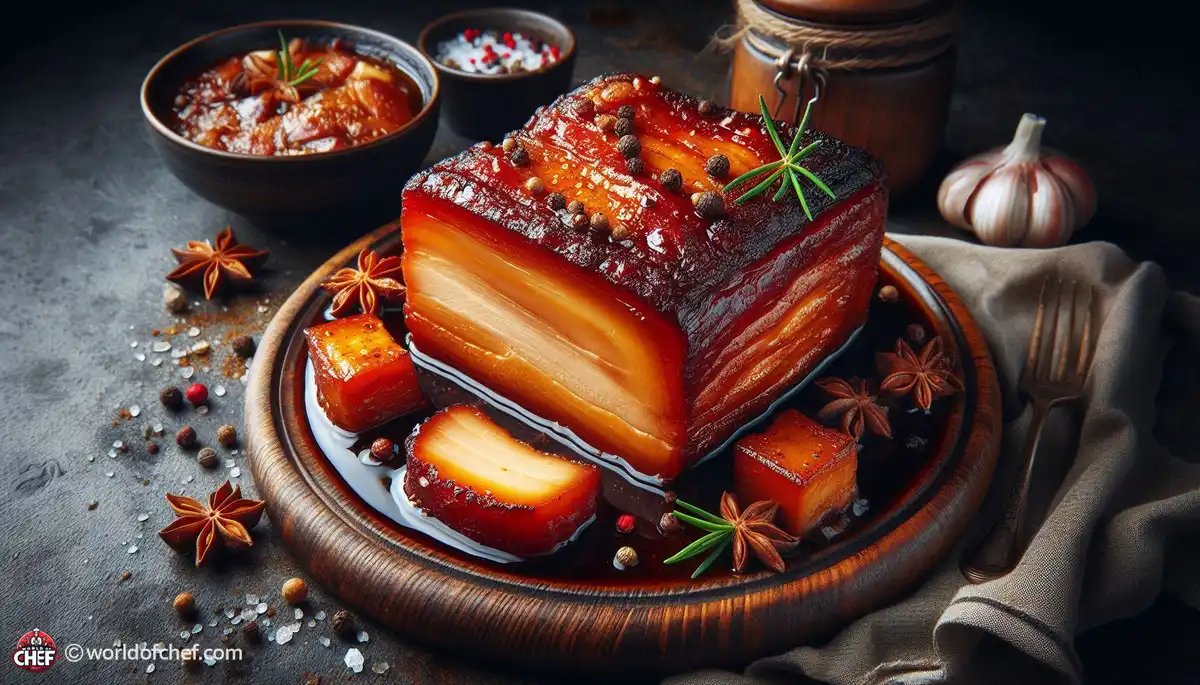
Simmering with Spices: Infusing Flavor into Your Dishes
Emery Donley - Oct 8, 2024 - 8 min read


When braising pork, the cut of meat will make all the difference. Choose cuts marbled with fat, like pork shoulder or pork belly. These cuts are more full of flavor and hold up to the braising time with enough fat so that the meat remains juicy and tender. Avoid lean cuts that dry out and become tough if braised too long.
Bone-in cuts also absorb flavors from the extra meat on the inside of the bone. Therefore, the marrow inside the bone adds flavor to the braising liquid, but at the end of the braise it gives a thicker sauce. However, if you prefer to serve your portions as more neatly cut pieces or cut through without the bone or carve it up it can be very helpful for presentation purposes, just select based on your preferred presentation style.
The size of the pork cut matters. Large pieces will require longer cooking times, but they are more likely to be tender and juicy. Smaller pieces cook more quickly, but their flavors are less developed. In choosing the size of pork cut for braising, consider the amount of cooking time you have available as well as what you would like the outcome to be.
Season the pork heavily with salt and pepper. This will flavor the meat, but also create a flavorful crust at the start of searing. You may add other spices or herbs if you wish, such as garlic powder, paprika, or thyme, to deepen the flavor.
Searing the pork before braising is essential in developing rich flavor and texture. Use a heavy-bottomed pan over medium-high heat, add a small amount of oil, and once hot, carefully place the pork in the pan and let it sear undisturbed for a few minutes until a golden-brown crust forms. Flip the pork and sear the other side as well. This step flavors the dish and also locks in juices such that the meat does not end up drying out during braising.
A common addition for pork braising recipes often involves aromatics. In this case, onions, carrots, and celery compose the aromatics. Although they add flavor to the meat, they also play an important role in producing the deep, complex sauce around the meat. Chop the aromatics coarsely and add to the pan after searing the pork. Cook until caramelized and softened, often stirring to prevent burning. This step adds a complexity to the flavor profile and makes the braised pork more flavorful.
The braising liquid is what will flavor the pork and keep it moist during cooking. Some common options include broth, wine, beer, or a combination of these. Choose a liquid that complements the flavors of the dish and adds depth to the sauce. For example, red wine adds richness and acidity, while beer can impart a slightly bitter note.
With the pork browned and aromatics caramelized, add braising liquid. Bring it to a gentle simmer before reducing heat to low. Cover it with a lid or aluminum foil, letting the pork braise in the low heat until fork-tender. Do not let the liquid boil since it may make the meat tough and dry. Braising pork needs to be done low and slow to make it tender and succulent.
Braising is not an overnight cooking process, but the wait is worth it. Braise the pork for some hours, checking from time to time if there is enough liquid left in the pan and if the meat is being cooked evenly. Do not let the temptation of increasing the heat to rush the process make you increase the heat because it may make the meat tough and dry. Be patient and let the pork slowly simmer away so that the flavors meld and develop over time.
Let it rest for a few minutes before slicing and serving after the pork is fully cooked and falls apart easily with a fork. This makes sure that the juices redistill throughout the meat so that each bite of the pork is moist and full of flavor. Cover the pork loosely with aluminum foil to keep it warm as you finish off any accompaniments or sauces you may be preparing.
The liquid now stands as a fine flavorful sauce to serve with the pork. Strain it through a fine-mesh sieve; then return it to the pan and simmer until it is reduced to your desired consistency. That will concentrate all the flavors and thicken the sauce enough to accompany the tenderly braised pork.
Garnish the braised pork with fresh herbs, such as parsley or cilantro, before serving to add pops of color and freshness. You can add a squeeze of lemon juice or a drizzle of olive oil for added flavor. Arrange the pork on a platter or on individual plates and spoon the sauce over the top. Serve it with your favorite side dishes, such as mashed potatoes or roasted vegetables, and crusty bread accompany braised pork succulently.

Emery Donley - Oct 8, 2024 - 8 min read

Russell Comeaux - Oct 8, 2024 - 8 min read

Walter Backus - Oct 7, 2024 - 8 min read

Samantha Thames - Oct 7, 2024 - 6 min read